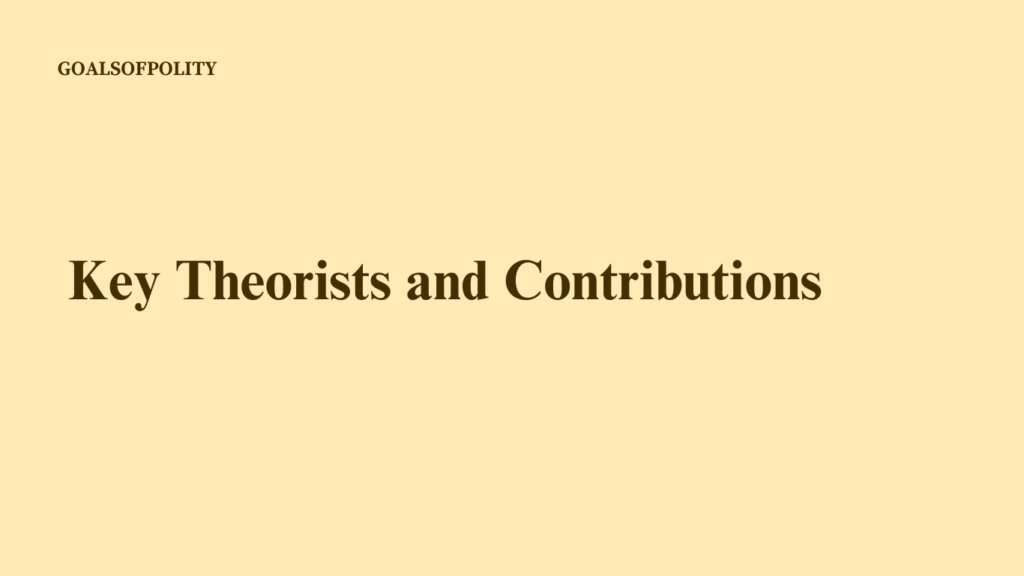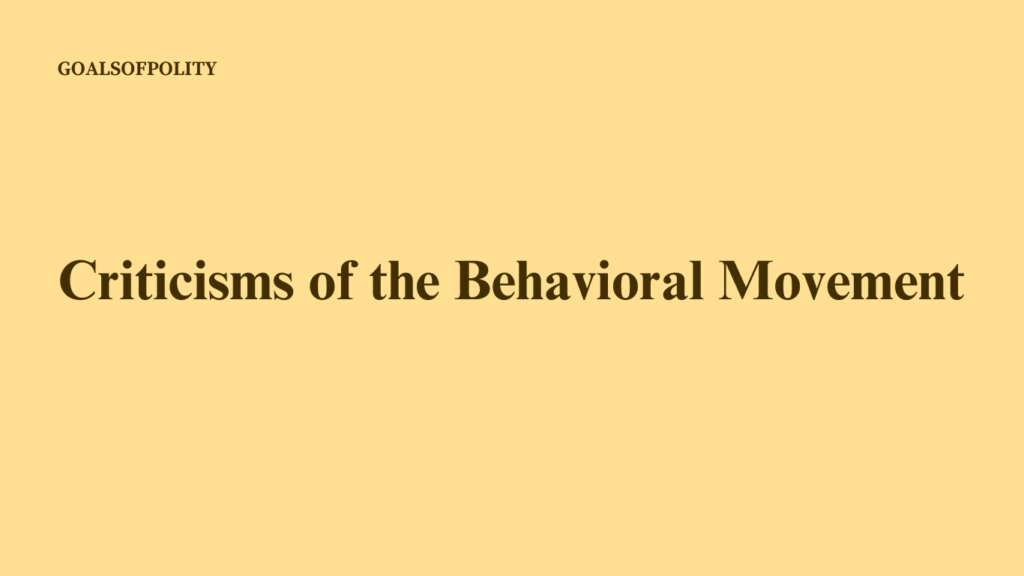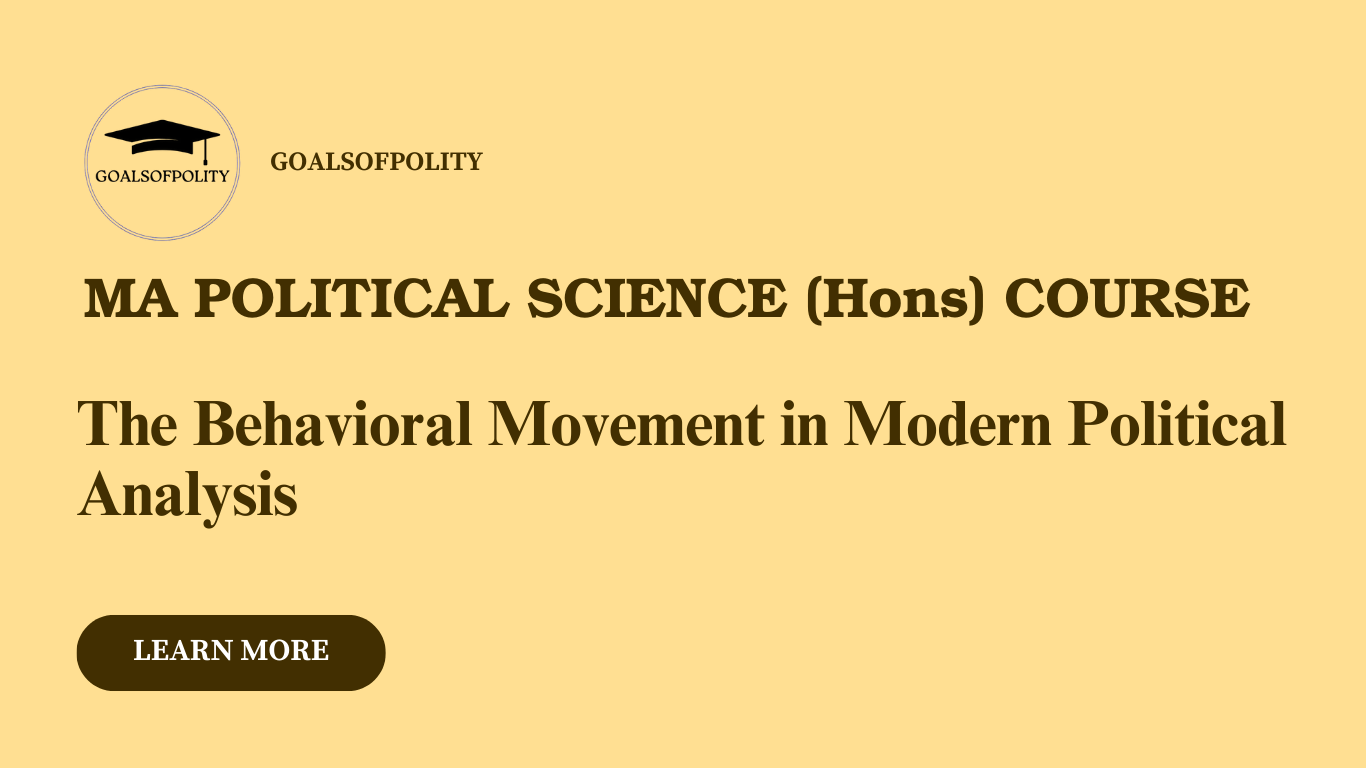Table of Contents
Introduction:
The behavioral movement, also known as behavioralism, emerged as an important trend in political science in the mid-20th century. It marked a shift from traditional, normative approaches toward a more empirical and scientific analysis of political behavior. The movement aimed to make political science more systematic, rigorous, and aligned with the methods of the natural sciences.
Historical Context:
The behavioral movement gained momentum in the United States after World War II, when the social sciences were being transformed by a desire to create objective, quantitative knowledge. This movement was a response to the perceived limitations of traditional political science, which was often criticized for being too descriptive, speculative, and focused on institutions rather than actual political behavior.
1. Main features:
Empirical Research:
This movement emphasized the collection and analysis of empirical data. Political scientists were encouraged to conduct field studies, surveys, and experiments to collect data on political behavior.
The focus shifted from normative questions, such as what should be, to empirical questions, such as what is.
Interdisciplinary Approach:
Behaviorists borrowed methods and theories from other social sciences, particularly psychology, sociology, and economics. This interdisciplinary approach helped them understand political behavior from various perspectives.
Concepts such as attitudes, opinions, and personality, often studied in psychology, were applied to political behavior.
Quantitative Methods:
The movement relied heavily on quantitative methods, including statistical analysis, to test hypotheses and theories.
The use of mathematical models and computer simulations aimed at predicting political behavior based on data became common.
Focus on the Individual:
In contrast to traditional approaches that focused on institutions and legal frameworks, the behavioral movement emphasized the study of individual political behavior.
Topics such as voting behavior, public opinion, political participation, and leadership were central to behavioral analysis.
Value-neutrality:
Behaviouralists advocated value-neutral research, meaning that political scientists should refrain from making value judgments and instead focus on objective analysis.
This approach aimed to make political science a ‘pure’ science, similar to the neutral sciences.
2. Key Theorists and Contributions:

David Easton:
Easton was a major proponent of the behavioral movement. He emphasized the need for political science to become more scientific and developed a systems theory of political science that focused on inputs (demands) and outputs (policies) within the political system.
Robert A. Dahl:
Dahl’s work on pluralism and democracy was rooted in the behavioral approach. He conducted empirical studies on political power and participation, contributing significantly to the understanding of democracy in practice.
Gabriel Almond:
Almond introduced the concept of political culture, which highlighted the role of individual beliefs, attitudes, and values in shaping political systems. His comparative studies of political systems were unprecedented in the behavioral tradition.
3. Criticisms:

Excessive Emphasis on Quantitative:
Critics argue that the behavioral movement’s focus on quantitative methods often leads to oversimplification of complex political phenomena. Not all aspects of political behavior can be quantified.
Neglect of Normative Concerns:
The emphasis on empirical research and value-neutrality led to the neglect of normative questions such as justice, ethics, and political philosophy, which are essential to understanding political systems.
Cultural Bias:
Some scholars criticized its West-centric approach, as many of the theories and models developed were based on the political systems of Western democracies and did not always apply to non-Western contexts.
Isolation from Real-World Politics:
The focus on abstract models and theories sometimes leads to isolation from real-world political issues and conflicts, reducing the relevance of political science to practical politics.
Conclusion:
The behavioral movement revolutionized political science by incorporating scientific rigor and empirical methods into the study of politics. Although it has faced criticism, its impact on the discipline is undeniable. Behaviorism laid the foundation for later developments in political science, such as rational choice theory and public choice theory. Today, political scientists leverage the insights of the behavioral movement, as well as address its limitations by integrating both empirical and normative approaches.
FAQs:
1. What is the behavioral movement in political science?
The behavioral movement is an approach in political science that focuses on the empirical and scientific study of the political behavior of individuals and groups using quantitative and qualitative methods.
2. Who are the major proponents of the behavioral movement?
Major proponents include Charles E. Merriam, who championed the scientific approach, and David Easton, who provided a theoretical framework for the movement.
3. How does the behavioral movement differ from traditional political science?
Traditional political science has often focused on legal and institutional analysis, while the behavioral movement emphasized observable human behavior and empirical data.
4. What are the main criticisms of the behavioral movement?
The main criticisms include excessive emphasis on qualifications, neglect of normative issues, Western-centric bias, and reductionist tendencies.
5. How did the behavioral movement influence modern political science?
It focused on empirical research methods, statistical tools, and human behavior, which have become integral to contemporary political analysis.
6. What is the post-behavioral movement?
The post-behavioral movement emerged as a critique of the behavioral approach, which advocated the inclusion of normative and ethical considerations in political science research.

